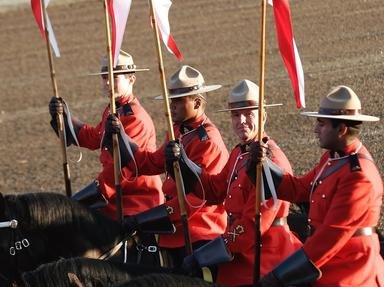Quiz Answer Key and Fun Facts
1. Before the colony of British Columbia was established, the area was known as the Columbia District, and administered by British fur trading companies (The North West Company, and later the Hudson Bay Company). The Columbia District was defined as land west of the continental divide. Along which mountain range is the continental divide?
2. The idea of borders had not been applied to the unexplored Pacific Northwest (by Europeans), and there were competing claims in the region. Negotiations to establish a defined border started in the early 1800s, but it was not until 1846 that the Oregon Boundary Treaty was finally signed. Why did it take so long to establish the 49th parallel as the boundary between the Columbia District of the British and the Oregon Territory of the United States?
3. The British had been administering the Columbia District since the early 1800s, and did not declare the area the Colony of British Columbia until 1858. What prompted the British to establish the colony?
4. A new colony required a new governor, and so the British sent Major General Richard Moody to administer British Columbia. Which town became the capital of the Colony of British Columbia?
5. Soon after British Columbia was established, tensions arose between the mainland and Vancouver Island, leading to Vancouver Island leaving British Columbia to become a separate colony for a time.
6. The Oregon Treaty of 1846 continued the border between the two nations along the 49th parallel until it reached the Pacific coast. There, it turned south to not affect Vancouver Island, but the exact wording was a little vague (and the maps were not great). Naturally, both sides interpreted the treaty in their own favour, which led to a brief, almost bloodless showdown for control of the San Juan Islands. What kind of animal was the only fatality of the dispute?
7. In 1867, on the other side of the continent, some other British colonies created a cool new club called Canada. Four years later, British Columbia joined the Canadian Confederation, bringing the total number of provinces up to what?
8. One of the conditions for British Columbia joining the Canadian Confederation was the creation of a transport route connecting the new province with the rest of the nation. There are many historical sites along the route, but which one can be found west of Revelstoke, about half way between Vancouver and Calgary?
9. It took decades to establish the southern border of British Columbia with the United States, and it would take another half century to figure out the northern part. While the United States had owned Alaska since 1867, the exact size of the panhandle was not certain. The boundary was established by a committee in 1903, with members from The United States, Canada, and which third nation?
10. As a colony, British Columbia used a variation of the British Blue Ensign for its flag, a design used by many colonies. In 1960, British Columbia adopted a new, much more distinctive flag for itself. Of course, being called British Columbia, the union flag was still going to be featured on the new flag. Where on the British Columbia flag was the union flag placed?
Source: Author
qrayx
This quiz was reviewed by FunTrivia editor
bloomsby before going online.
Any errors found in FunTrivia content are routinely corrected through our feedback system.

